Senior Science Journalist
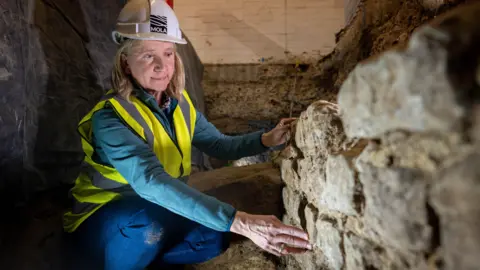 Tony Jolliffe/ BBC
Tony Jolliffe/ BBCA discovery beneath the basement of an administrative center stop has been described as one of the vital noteceable items of Roman historical past unearthed within the town of London.
Archaeologists have discovered a considerable piece of the traditional town’s first basilica – a 2,000 presen used people development the place main political, financial and administrative selections have been made.
The excavation has to this point visible categories of stone wall that shaped the bottom of the basilica, which might were two-and-half storeys prime.
The web site, which can sooner or later be opened to the people, sheds sunny at the town’s beginnings.
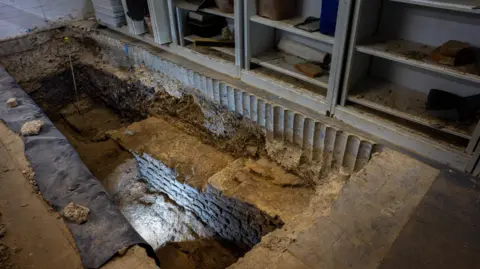 Tony Jolliffe/BBC
Tony Jolliffe/BBC“This is so significant – this is the heart of Roman London,” mentioned Sophie Jackson, from the Museum of London Archaeology (Mola), who visible the fresh in finding completely to BBC Information.
“This building will tell us so much about the origins of London, why London grew and why it was chosen as the capital of Britain. It’s just amazing.”
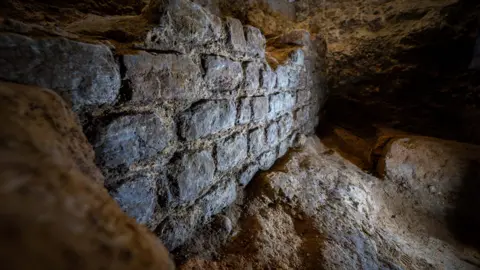 Tony Jolliffe/ BBC Information
Tony Jolliffe/ BBC InformationThe web site used to be found out at 85 Gracechurch Boulevard, an administrative center development that’s about to be demolished and redeveloped.
Previous archaeological investigations visible the traditional basilica’s approximate location, so the crew created a number of mini check pits to peer what used to be unrevealed underneath the concrete flooring.
At the 3rd aim, digging between the submitting cupboards, they struck fortunate.
“You can see a huge chunk of Roman masonry, and it’s incredible that it survives this well. We’re absolutely thrilled that there’s so much of it here,” mentioned Sophie Jackson.
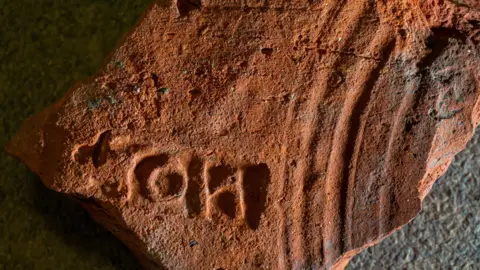 Tony Jolliffe/BBC
Tony Jolliffe/BBCThe wall is comprised of a kind of limestone from Kent, and shaped an impressive development – the basilica would were about 40m lengthy, 20m broad and 12m prime.
Alternative artefacts were discovered too, together with a roof tile imprinted with the stamp of an respectable from the traditional town.
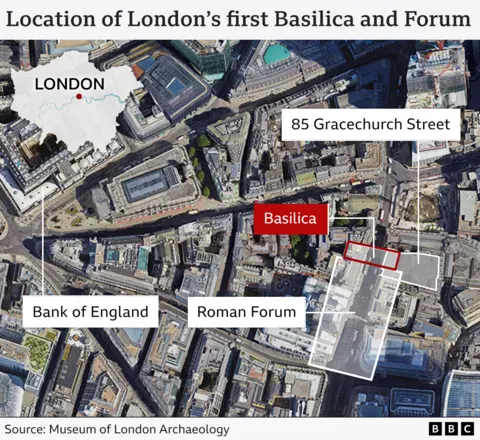
The basilica used to be a part of London’s discussion board, a social and business hub with a court that used to be in regards to the measurement of a soccer tone.
“The basilica is the town hall, and then in front of it was a big open market square with a range of shops and offices around the outside,” defined Ms Jackson.
“It’s the place you came to do business, to get your court case sorted out, it’s where laws were made, and it’s where decisions were made about London, but also about the rest of the country.”
It used to be constructed round 80 AD, only a few a long time next the Romans invaded Britain and based Londinium – the Roman identify for town.
However the first basilica and discussion board have been most effective in significance for roughly twenty years. They have been changed through a miles greater 2nd discussion board, most likely reflecting how briefly town used to be rising in measurement and significance.
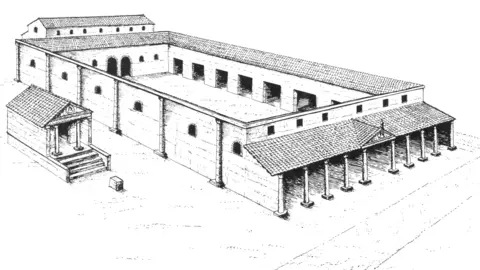 Peter Marsden
Peter MarsdenThe invention has supposed a metamorphosis of plans for the development’s homeowners, Hertshten Houses.
The Roman residue, which can now be totally excavated, are to be included into the fresh places of work – pending making plans kindness – and opened as much as the people.
For the architects, redesigning a development round an archaeological web site has had some technical demanding situations.
“The scheme has been comprehensively adjusted,” defined James Taylor from structure company Planks Bagot.
“Simple things like the columns have had to literally move position, so you’re not destroying all these special stones that we found in the ground.”
And in order to not disturb what’s there, fewer lifts can now be put in – and this has supposed that the crew has needed to leave the peak of the development.
However Mr Taylor mentioned the try might be utility it.
“To actually see people using and enjoying the space, moving through the public hall and down to see the remains, will be absolutely incredible.”
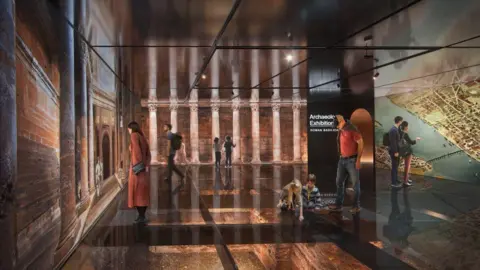 Planks Bagot
Planks BagotThat is the original piece of Roman historical past to be found out mendacity underneath the streets of London’s Sq. Mile. And there’s a rising try to seek out cutting edge techniques to turn those websites to the people.
Portions of an amphitheatre are on show underneath a pitcher flooring on the Guildhall Artwork Gallery, and at Bloomberg’s places of work, public can seek advice from the Temple of Mithras, which has been dropped at day with an immersive tone and sunny set up.
Chris Hayward from the Town of London Company says he needs extra public to enjoy the hyperlink between the time and the existing.
“The fact that Roman London is beneath your feet is, frankly, quite a remarkable emotion to experience,” he mentioned.
“You can actually see and visualise how Roman London would have been in those times. And then you can walk outside and you can say, ‘now look at the skyscrapers, now look at the office blocks’, this is progress, but at the same time, progress combined with preservation.”


